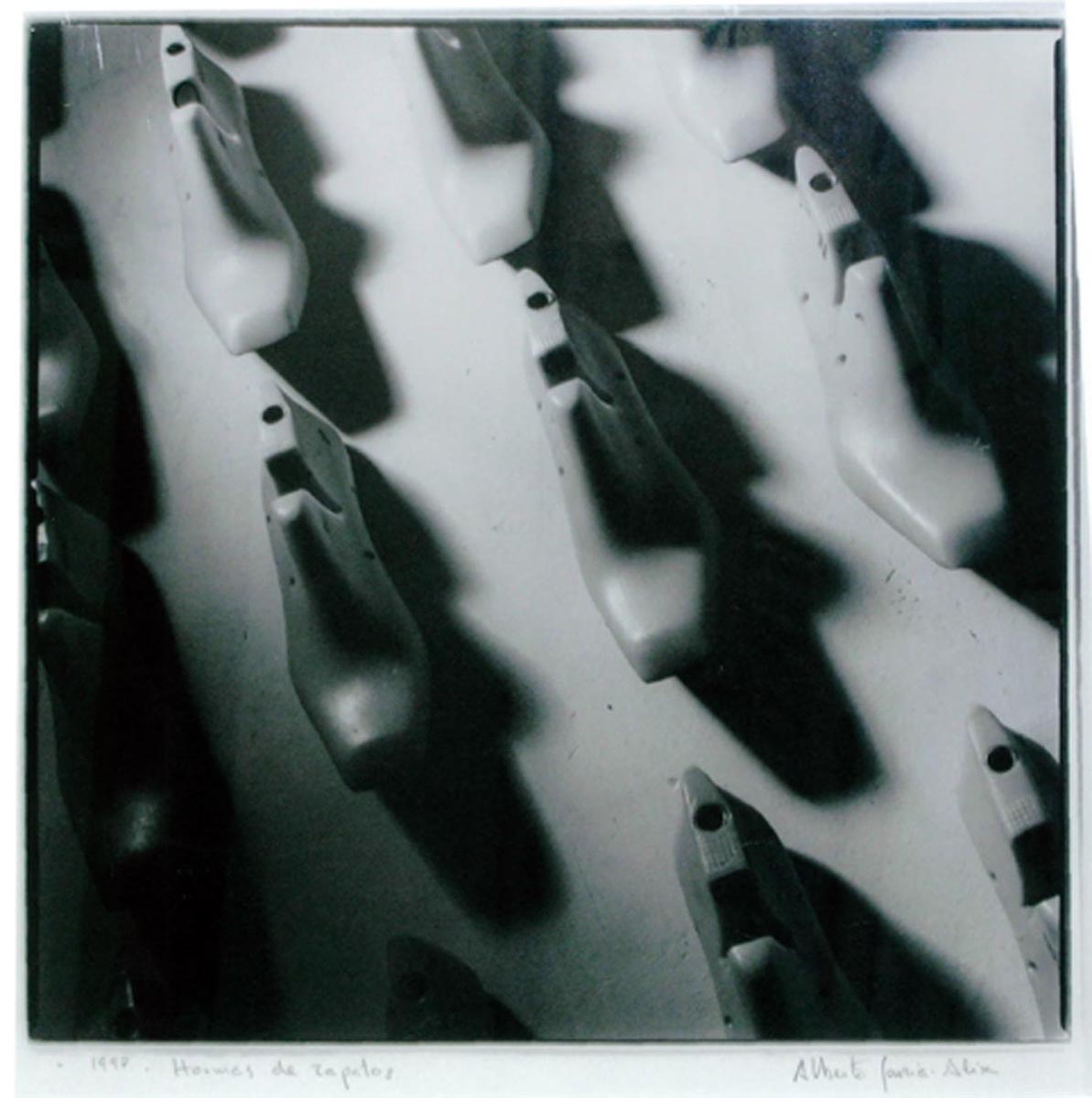Communication with the purpose of culturally promoting artists included in the Fundación María Cristina Masaveu Peterson Collection, works protected by intellectual property rights. Their total or partial reproduction or processing by any means, or their transmission or cession in any form is forbidden without the authorisation of the holder of the rights to the works
© García-Alix, Alberto. VEGAP, Madrid, 2025
Hormas de zapatos
TECHNICAL DATA
Author: Alberto García-Alix (León, 1956)
Title: Hormas de zapatos (Shoe Lasts)
Year: 1997
Technique: silver gelatine dry plate photograph, with selenium bath on baryta paper and vintage frame
Size: 37 x 66 cm
Edition: Unique
This work was acquired by the Maria Cristina Masaveu Peterson Foundation during Art Basel 2010 in Switzerland, a year after having already acquired a photograph by Alberto García-Alix for this collection of the Contemporary Art Collection at Madrid’s 2010 International Contemporary Art Fair (ARCO). The artist’s relationship with the FMCMP is important, and his experience and seniority has also been useful in organising the first edition of Miradas de Asturias (Visions of Asturias), a long-term initiative launched by the Foundation in 2011 to promote the creation of a set of unprecedented works on Asturias and its people, made up of the personal vision of prestigious international photographers. The “Patria Querida” exhibition by García-Alix was the first in this project to be organised, and is currently on tour, being presented so far in institutional rooms in Gijón (Asturias), Madrid, Lisbon (Portugal) and New York (United States).
The work in question belongs to a series made in 1997, part of which was exhibited in different European spaces and galleries and in various retrospectives, such as the one organised by the Ministry of Culture at the Círculo de Bellas Artes in Madrid in 1998, after the Leonese artist won the National Photography Prize. Inspired by different types and elements related to the world of footwear, as a visual metaphor for a compendium of aesthetic, formal and social modes, he uses this repetitive image of a shoe model (or, as in this case, shoe lasts) to symbolise certain conceptual frameworks that harbour an anthropological sense, in that constant interest shown by García-Alix in portraying everyday people through portraits or through their clothing. It is a fetishist dialogue of the artist and the model, using everyday, seemingly simple objects, to compose a really powerful image. The rhythm and monochromatic contrast of this small work extract beauty from a humble blueprint, under poetic austerity.

